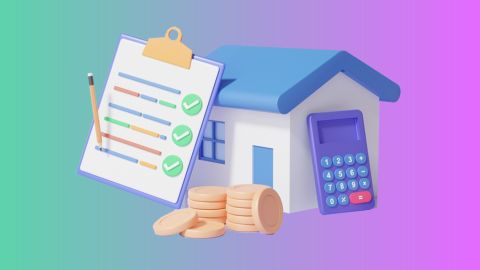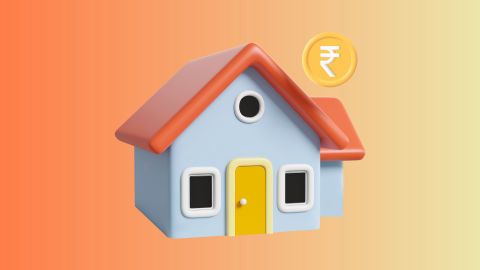A self-occupied property refers to a residence that is owned and used by the taxpayer exclusively for personal living throughout the year, without being rented out. To qualify as self-occupied, the property must not be used for any other purpose. In cases where the owner is unable to reside in the property due to employment, business, or professional commitments—yet the property remains vacant and is not rented out—it can still be considered self-occupied, provided certain conditions are met.
Simply put, it refers to a property where the owner or their family resides, without renting it out. Knowing the nuances of self-occupied property can help homeowners manage their finances better, especially when it comes to tax benefits and deductions. If you are considering leveraging your property for financial needs, Bajaj Finserv Loan Against Property could be a viable option. This product offers attractive features and benefits, making it an excellent choice for those looking to capitalise on their self-occupied property without selling it. Let's dive deeper into what self-occupied property means and its implications.
What is self-occupied property?
A self-occupied property is a residential property used by the owner or their family for living purposes. This property is not rented out at any point during the financial year. The term is significant when it comes to taxation and financial planning, as it affects the deductions and exemptions homeowners can claim. In essence, any home where the owner resides is termed as self-occupied property. Interestingly, your self-occupied property could also serve as an asset to unlock funds for your urgent needs. Bajaj Finserv Loan Against Property lets you leverage the value of your property at attractive interest rates, without the hassle of selling it. Use your property as collateral and unlock fast funding! Check your loan offer in just seconds!
Key Characteristics of Self-Occupied Property
A self-occupied property refers to a residential property used by the owner or their family for personal living purposes. It is not rented out and qualifies for specific tax and loan benefits.
- Residential use: The property is used for residential purposes by the owner or their family.
- No rental income: It does not generate any rental income throughout the financial year.
- Tax benefits: Owners can claim various tax benefits and deductions under the Income Tax Act.
- Loan eligibility: Properties classified as self-occupied can be used to secure loans, such as Bajaj Finserv Loan Against Property.
Tax Implications for Self-Occupied Properties
Tax implications play an important role in owning an owner-occupied property. The Indian Income Tax Act offers several benefits to individuals who live in their own homes. The annual value of a self-occupied property is treated as nil, meaning it generates no taxable income. This helps reduce the overall taxable amount for homeowners. Additionally, under Section 24(b), homeowners can claim a deduction of up to ₹2 lakh on the interest paid on a home loan for an owner-occupied property, significantly lowering their tax burden and improving savings.
But what if you could take your self-occupied property’s value even further? Want to unlock the potential of your property without selling it? With Bajaj Finserv Loan Against Property, you can leverage the equity in your self-occupied property to meet urgent financial needs. Whether it is for home renovations, educational expenses, or business growth, Bajaj Finance offers competitive interest rates, making it a cost-effective solution to manage your finances. Plus, with a simple application process and flexible repayment options, you can access funds quickly and efficiently. Why not make your property work harder for you? Check your eligibility now!
Eligibility criteria for claiming tax benefits on self-occupied property
To claim tax benefits on a self-occupied property under the Indian Income Tax Act, homeowners must meet specific eligibility requirements. These criteria ensure that deductions are claimed only for genuine residential use.
- Ownership: The individual claiming the benefit must be the legal owner or co-owner of the property. Joint owners can claim deductions in proportion to their ownership share.
- Occupancy: The property must be used by the owner or their family for residential purposes and should not be rented out during the financial year.
- Loan purpose: The home loan should be taken for purchasing, constructing, or renovating the property, and it must be from a recognised financial institution or lender.
- Completion timeline: To claim interest deductions under Section 24(b), the property’s construction must be completed within five years from the end of the financial year in which the loan was taken.
- Documentation: The homeowner must retain proof of ownership, loan statements, and completion certificates to validate claims during income tax filing.
Meeting these conditions allows homeowners to claim tax deductions effectively and maximise savings on their owner-occupied property.
Calculation of income from self-occupied property
The calculation is simple because the annual value is treated as nil. Here is a step-by-step breakdown, including how co-ownership tax benefits work:
- Determine the annual value: For self-occupied properties, the annual value is considered zero.
- Subtract municipal taxes: Since the annual value is nil, municipal taxes paid are not considered.
- Deduct home loan interest: Deduct the interest paid on the home loan, up to ₹2 lakh, under Section 24(b).
The resulting value is the net income from the self-occupied property, which, in most cases, is a negative figure, representing a loss that can be set off against other income.
Tax benefits on self-occupied property
Here are the key tax benefits available for a self-occupied property under the Income Tax Act, 1961:
- No notional rent: Income from a self-occupied property is considered nil, so you do not have to pay tax on notional rent.
- Deduction on home loan interest (Section 24b): You can claim a deduction of up to Rs. 2 lakh per year on interest paid for a home loan.
- Deduction on principal repayment (Section 80C): Principal repayment is eligible for deduction up to Rs. 1.5 lakh annually, included within the overall 80C limit.
- Pre-construction interest: Interest paid during the construction period can be claimed in 5 equal instalments starting from the year construction is completed.
- Deemed self-occupied condition: If you are living elsewhere due to employment or business and the property is vacant, it can still be considered self-occupied.
Now, if your property’s full potential is still untapped, why not explore the option of a Bajaj Finserv Loan Against Property? With minimal paperwork and quick processing, it is a smart way to unlock funds for your needs. Check your loan eligibility and find out how much you can borrow now.
Comparing self-occupied and let-out properties
Understanding the difference between self-occupied and let-out properties is essential for homeowners, as each type has distinct tax implications and income treatment under the Income Tax Act.
- Usage: A self-occupied property is used by the owner or their family for residential purposes, whereas a let-out property is rented to tenants and generates rental income.
- Annual value: The annual value of a self-occupied property is considered nil, meaning no taxable income arises. In contrast, a let-out property’s annual value equals the actual rent received or receivable during the year.
- Tax deductions: For self-occupied properties, homeowners can claim up to ₹2 lakh as a deduction on interest paid under Section 24(b). For let-out properties, the entire interest amount is deductible, making them more tax-efficient in some cases.
- Principal repayment: In both cases, repayment of the principal amount qualifies for a deduction under Section 80C, up to Rs.1.5 lakh annually.
- Co-ownership tax benefits: When the property is jointly owned, each co-owner can claim deductions in proportion to their share, enhancing the total tax-saving potential for the household.
- Overall tax treatment: While self-occupied properties reduce taxable income due to nil annual value, let-out properties can offer higher deductions but may increase taxable income depending on rental returns.
Deductions available for self-occupied properties
Homeowners of self-occupied properties can avail various deductions to reduce their taxable income. The primary deductions under Section 24(b) include:
- Interest on home loan: Under Section 24(b), a deduction of up to ₹2 lakh is allowed for the interest paid on a home loan for a self-occupied property.
- Principal repayment: Under Section 80C, homeowners can claim a deduction of up to ₹1.5 lakh on the principal repayment of the home loan.
- Stamp duty and registration charges: These costs can also be claimed under Section 80C, within the overall limit of ₹1.5 lakh.
Leveraging these deductions can significantly reduce the financial burden on homeowners.
Manage your immediate financial needs with a Bajaj Finserv Loan Against Property
If you own a self-occupied property and need funds urgently, consider a Bajaj Finserv Loan Against Property. It offers competitive interest rates and flexible repayment options, enabling you to unlock your property's value without selling it. Additionally, homeowners can continue to enjoy residential property tax benefits under the Income Tax Act, making it a smart way to meet financial needs while retaining ownership.
- High loan value: Loans up to Rs. 10.50 Crore* are available.
- Simple eligibility: The application process has simple and easy loan against property eligibility criteria.
- Competitive interest rates: Enjoy attractive interest rates for cost-effective borrowing.
- Quick approval and disbursal: Swift processing with minimal documentation.
- Flexible tenure: Repayment tenure can extend up to 15 years*.
- Balance transfer facility: Transfer your existing loan to Bajaj Finance with minimal paperwork, quick processing, and better loan terms.
Understanding what self-occupied property is and how it is essential for homeowners. It not only helps in effective financial planning but also ensures that one avails the maximum benefits under the tax laws. If you own a self-occupied property and are looking for financial assistance, consider Bajaj Finserv Loan Against Property. With competitive interest rates and flexible repayment options, it can be an excellent way to unlock the value of your property without selling it. To know more about the application process, charges, and loan against property interest rate, visit the official website of Bajaj Finance.
Did you know you may be eligible for our loan against property offers with low-interest rates? Check your offer in just 2 clicks!




